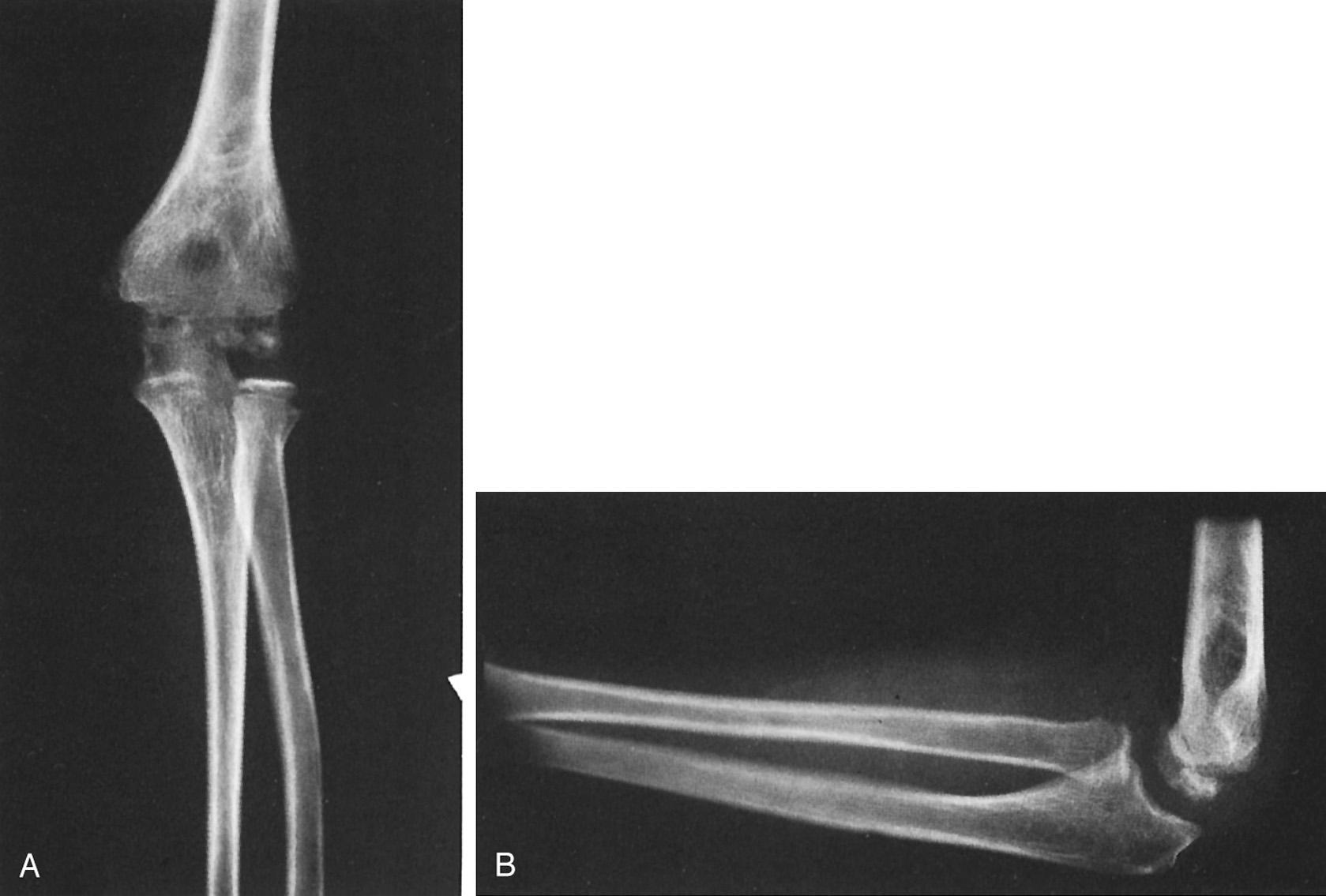Physical Address
304 North Cardinal St.
Dorchester Center, MA 02124
Osteochondral lesions may be the source of elbow pain, swelling, and loss of motion in children or adolescents. The typical presentation is an adolescent gymnast or overhead throwing athlete (e.g., baseball pitcher). The dominant arm is usually involved but may be bilateral in approximately 5% to 20%.
It is important to distinguish between osteochondrosis of the capitellum, or Panner disease, and osteochondritis dissecans (OCD). The distinction, based on patient age, radiographic findings, and degree of involvement of the capitellar secondary ossification center, has received only sporadic attention in the literature. It is possible, however, that the two conditions represent different stages of a single process that affects the formation and maturation of the capitellar epiphysis.
Osteochondrosis is defined as a disease of the growth or ossification centers in children that begins as a degeneration or necrosis, followed by regeneration or recalcification. Familiar sites of osteochondrosis in children include the proximal femur (Perthes disease) and the tarsal navicular (Kohler disease). Osteochondrosis of the capitellum is also called Panner disease or osteochondrosis deformans capitelli humeri . Panner first described the radiographic changes involving the capitellum in 1927.
Osteochondrosis of the capitellum and OCD may represent two manifestations of the same condition in different aged children. The different clinical presentations, treatments, and outcomes of the two groups make it more useful to consider them separately.
Osteochondrosis of the capitellum is characterized by dull, aching pain in the elbow that usually is aggravated by motion or use, particularly during throwing, gymnastics, or sports activities. It usually occurs in boys (90%) and always during the period of active ossification of the capitellar epiphysis (ages 7 to 12, peak at 9 years). Panner disease is not seen before 5 years of age. In addition to pain, stiffness with loss of 5 to 20 degrees of elbow extension is common. Local swelling and tenderness over the lateral side of the elbow is not unusual. Symptoms resolve over several months to 2 years with few sequelae. The etiology of the condition remains unknown but may be related to abnormal valgus stress on the elbow.
Osteochondrosis of the capitellum is a focal or localized avascular lesion of subchondral bone and its overlying articular cartilage. Radiographically, there is fragmentation of the capitellar epiphysis. The fragmentation is due to irregular patches of relative sclerosis alternating with areas of rarefaction ( Fig. 33.1A,B ). The outline of the epiphysis may be slightly irregular and smaller than that of the opposite normal capitellar epiphysis. Despite the radiographic fragmentation, osteochondral loose bodies do not form. As growth progresses, the capitellar epiphysis eventually assumes a normal appearance in size, contour, and internal architecture as clinical symptoms resolve. Residual deformity of the capitellum is rare.

Magnetic resonance imaging (MRI) findings include decreased signal intensity of the ossified epiphysis on T1-weighted images and an elbow joint effusion. Both plain films and MRI images of osteochondrosis of the capitellum are similar to findings in Legg-Calvé-Perthes disease of the hip. Deformity and collapse of the articular surface are less common in osteochondrosis of the capitellum than in Perthes disease of the hip.
Because osteochondrosis of the capitellum is a benign, self-limited condition, no active or operative treatment is necessary, although immobilization in a cast, sling or splint was used in 53% of patients reviewed by Claessen. Activity modifications and rest for symptomatic relief are usually sufficient. The prognosis is good, with complete or nearly complete radiographic healing in 93% and full range of motion (ROM) in 78% of patients.
Become a Clinical Tree membership for Full access and enjoy Unlimited articles
If you are a member. Log in here